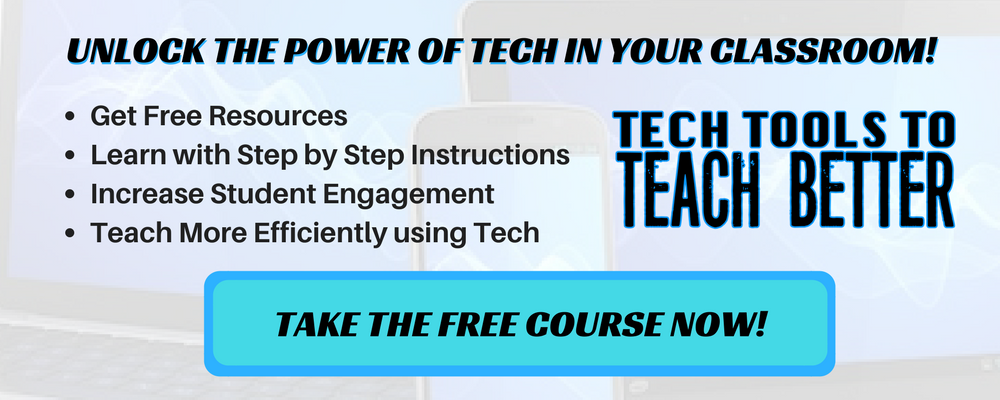TL;DR:
- The ending of this school year will bring up many questions about the future of education post-pandemic.
- Consider what you would like to leave in the past from pre-pandemic times.
- Reflect on what you’ve learned through teaching in the pandemic. Then, use these reflections to decide what you’d like to continue doing in a post-pandemic world.
As you read this, you’ve likely got a few months to go before the spring semester ends. Several of us are still teaching and leading in a remote setting. Some have stayed in or returned to hybrid after a short period of remote learning. Yet others have managed to stay full-time in-person all year. As we wrap up the months remaining in the 2020-21 school year, many of us are wondering about the future of education post-pandemic.
We all hope things will be back to “normal” in terms of being in the building at the beginning of the fall semester. We recognize that we’ll still likely be wearing masks and socially distancing, because even though educators will likely have been vaccinated, students likely won’t be.
Wrapping up the school year brings up many questions.
- What may we expect education to look like post-pandemic?
- What changes have been made since March 2020 in terms of innovative thinking and new ways from the “pre-pandemic” educational model educating children, that we hope will stay?
- And what are things from the “pre-pandemic” educational model we’d like to put in the past and have stay there in the past?
- As educators, in whatever our roles are, what can we all do to ensure these changes are lasting?
As the host of the Out of the Trenches podcast, this very topic has been prevalent in many of the conversations I’ve recently had with guests. Most guests hope for more equity among students at all levels, especially in terms of filling in knowledge gaps due to the constant back-and-forth of in-person and remote learning this year.
Others hope that the use of technology in the classroom doesn’t disappear despite being back in the building. While many districts now have the technology that was lacking, such as one-to-one iPads or Chromebooks, we must not just check the tech back in once students are in the building and rarely use it again.
What would you like to embrace and explore more in terms of tools, methods, and tech you've used this past year, and continue to use in the post-pandemic world? Click To TweetMany schools had been leading up to tech integration for years prior to 2020.
In 2015, I taught in a district with one-to-one iPads and “paperless” assignments. Google Classroom was the norm as to where to put assignments and receive them. Students used their iPad camera to take pictures of artifacts they needed to complete their assignments. In 2013, I read Flip Your Classroom: Reaching Every Student in Every Class, Every Day by Jonathan Bergman and Aaron Sams.
Although this book is already almost a decade old, it clearly outlines several ways to use the flipped classroom model. I expect this is a model many teachers will embrace as we plan for the 2021-22 school year. Educators can still use many of the elements of remote teaching (recording lessons, uploading work, students collaborating on documents), but they can be the “guide on the side” for students in the building who are working at their own pace on assignments. If you haven’t yet read the flipped classroom book, I highly recommend you check it out as you ponder what your teaching (or support of teachers) is going to look like next year.
[scroll down to keep reading]
To that end, the elephant in the room question is, “What are things we’d like to put in the past from the ‘pre-pandemic’ educational model?”
Many would say take away standardized testing. Others would say don’t use a “one size fits all” way of teaching, but use project and problem-based learning models. Still, others would say to take away traditional grades. Several other Teach Better Team bloggers have written recently on many of these topics. Take a moment to ponder these questions:
- What educational models do you want to move away from and never return to?
- What would you like to embrace and explore more in terms of tools, methods, and tech you’ve used this past year, and continue to use in the post-pandemic world?
The title of this blog article opens up many questions for us educators.
I’d love to hear your thoughts and answers to the questions above. Send me a tweet or DM @danagoodier. We have learned so much from each other this past year. Let us not forget the collaboration we’ve taken part of this year as we move into a post-pandemic world. We all have something to learn from others. We will continue to improve by listening to and seeing what other educators across the globe are doing.
About Dana Goodier
Dr. Dana Goodier has 20 years of experience in education. She has taught World Languages and English and worked as a middle school administrator. She completed her doctorate degree (Ed.D.) in Educational Leadership early 2020. For her dissertation, she researched reasons parents were opting their students out of high-stakes testing at middle schools and how that affected the district accreditation rating. She often speaks at conferences, providing educators with techniques to minimize off-task behavior and to increase time on task. She is the host of the “Out of the Trenches” podcast, which features educators who share their stories of resiliency. Follow her on Twitter @danagoodier and visit her website at: www.danagoodier.com



